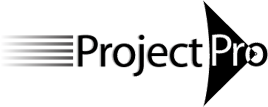
Intermediate Forecast Scheduling (Workload Modeling) - online course - live
Regular price
$1,245.00 USD
$1,245.00 USD
Sale
The Dates for the sessions will be determined with you. The sessions will be recorded, so you can easily catch up on a missed session.
About This Course
A project schedule as a workload model is a schedule that projects the aggregated workloads of the resources over time and the total effort for the project. It is an effort‑based schedule and requires loading resources into the schedule. A Workload Model supports organization-wide resource management; Project Online will aggregate total workloads by resource across projects. The overall goal of the course is to learn how to create Workload Models of a project. The content of the course is restricted to scheduling a single project in Microsoft Project Online.
Each Participant Will Receive
- A copy of the published textbook 'Forecast Scheduling with Microsoft Project Online 2018'.
- NEW a free one-year license for our 'Forecast Scheduling App' that performs the checks on best practices in an automated fashion and helps you improve your schedule.
- An electronic certificate with 12 PDUs (live-online and self-paced classes) upon completion of the course
- An opportunity to earn the 'Forecast Scheduler – Workload Modeling' certificate of competency and earn an additional 20 PDUs (For more, see: Overview Certification)
Please Bring to Class
A computer loaded with Microsoft Project 2016/2019 or Project for the Desktop (Project Online).
Learning Objectives
After this course, you will:
- Be able to create a valid, dynamic and robust workload model of your project to forecast it continuously. A workload model is a resource-loaded project schedule.
- Be an expert in optimizing resource-constrained project schedules: Resource-Critical Path
- Be able to create custom reports with regards to time forecasts and workload projections
- Know how to efficiently update the schedule during project execution to continuously forecast the project end date, workloads and cost
Course Topics
From Time Model to Workload Model:
- Add the 5A’s: Activities, Availabilities of Resources, Assignments, Assignment Effort, Assignment Units
- Add the activities
- Assign resources while paying attention to assigning a percentage or number of resources to an activity, so that the amounts of Work calculated by MS Project come out right
Setup
- The Principle of Forecast Scheduling: creating a schedule in such a way that it continually forecasts time and the aggregated workloads and total amount of effort for the project.
- Options: relevant options for workload models
- Manually scheduled tasks and whether to use them (Not!)
- The Project Calendar
Work Breakdown Structure
- Finding the right level of detail for breaking down the work
- Fixed Duration, Fixed Units and Fixed Work tasks and when to use each type of task
- Recurring tasks (status meetings) and overhead tasks
Estimates
- A standard process for estimating
- Estimating and entering work (i.e. effort as opposed to durations)
- Protect the Work estimate; set task Type to Fixed Work
- Workload model formula: Work/ Units of Resources = Duration
- Difficulties in estimating and techniques to address them
Dependencies and Network Logic
- The principle of dynamic scheduling saves you time
- Using dependencies to model cause-and-effect relationships in the project
- Types of dependencies and when to use each type
- How to check the completeness and correctness of your network logic
Deadlines (target dates)
- How Deadlines support the principle of dynamic scheduling and how Constraints wreck it
- Type of schedule constraints (fixed dates): How they make your schedule rigid and maintenance-hungry
Resources
- Types of resources: human (Work), material, facility, equipment (Material) and monetary (Cost) resources
- Humans: Generic versus actual resources: when to use each type?
- Part-time, full-time and team resources
- Flat resource availability or availability that varies over time
- Stable rates or rates that vary over time
- Calendars: the project calendar, task calendars, base calendars and resource calendars
Assignments
- The formula: Duration * Units = Work
- How to best deal with this formula: Three rules to make MS Project an easy tool for you
- Assign Resources dialog
- Team Planner view: pro’s and con’s
- Part-time versus full-time assignments
How to manage resource workloads
- Preventing or resolving overallocations?
- Making workloads visible and finding over-allocations
- Resolving over-allocations: When to level by hand and when to rely on MS Project
Leveling workloads by hand
- The best view to resolve over-allocations yourself: Resource Allocation view
- A complete list of methods to resolve over-allocations manually
Leveling workloads automatically
- What MS Project can and cannot do for you in resolving over-allocations
- Leveling algorithms used by MS Project
- Where to check how MS Project resolved the over-allocations: Leveling Gantt view
Optimizing for Time and Workloads
- Review of The Critical Path Method (CPM)
- How resource-leveling affects the Critical Path
- Having limited resources in a resource-constrained schedule: the NEW concept of a Resource-Critical Path that incorporates logical AND resource dependencies
- Finding the Resource-Critical Path in a Workload Model
- Ways to shorten or crash the Resource-Critical Path
Checking the Schedule before Publishing
- Is the schedule a valid, robust and dynamic model of the project to forecast its end date, the aggregated workloads over time and the total effort continuously?
- Using our 76-point checklist for Workload Models and our Forecast Scheduling App (FSA) to identify the violating tasks / resources
- How-to steps on improving your schedule with FSA
Reporting the Project, the Way You Want
- Creating one-page reports … always!
- How to defend a visible time-buffer to your sponsor or client
- Timeline view
- Use the Reports ribbon
- Develop custom workload views with custom Fields, Tables, Filters and Groups
- Create custom workload reports: Workloads over Time (Time-Phased and Cumulative), the NEW concept of an ‘Earned Work’ report (a simplified version of Earned Value expressed in ‘hours’)
- How to re-use reports elsewhere using the Organizer
How to enter actual progress and how to update estimates in the schedule:
- Updating tasks versus updating assignments (the latter needs an electronic time sheet)
- Baselining: how to maintain a baseline when change requests are approved
- Efficiently updating tasks (no electronic timesheet)
- Efficiently updating assignments (using an electronic timesheet)
